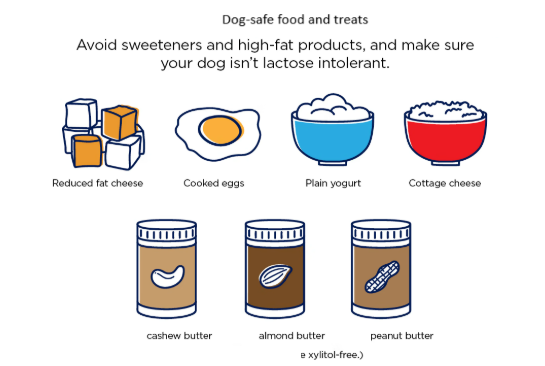Safe Dog Treats: The Hidden Danger of Xylitol
Safe Dog Treats
Corkie the Yorkie
4/29/20254 min read


As a loving dog owner, you want to provide the best for your furry friend. You may indulge them with treats from time to time, but it's essential to know that not all treats are safe. One significant danger lurking in many foods today is a sweetener called xylitol. This blog post aims to educate you about the dangers of xylitol in food products and help you find safe alternatives for your beloved pup.
What is Xylitol?
Xylitol is a sugar alcohol commonly used as a sugar substitute in various products. It is found in many foods, including gum, candies, baked goods, and even some dental products. Unlike regular sugar, xylitol has a low glycemic index, making it an attractive option for those looking to reduce sugar intake or prevent dental cavities. However, while it is safe for humans, xylitol is extremely toxic to dogs.
When dogs consume xylitol, it can cause a rapid release of insulin, which leads to a dangerous drop in blood sugar levels, a condition known as hypoglycemia. It's crucial to know that even small amounts can be harmful and potentially fatal.
Why is Xylitol Dangerous for Dogs?
The danger of xylitol lies in its swift impact on a dog's body. When ingested, xylitol is absorbed into the bloodstream more quickly than in humans, causing insulin levels to spike. This can lead to hypoglycemia within just 30 minutes of ingestion. Symptoms of low blood sugar can appear suddenly and include:
Weakness
Lethargy
Loss of coordination
Seizures
Coma
In severe cases, xylitol ingestion can lead to liver failure. The risk is so significant that many veterinarians classify xylitol as a potentially lethal substance. Understanding the risks associated with xylitol is the first step in keeping your dog safe.
Xylitol is a common ingredient, but it can be toxic to dogs.
Common Foods That Contain Xylitol
Being informed about which products may contain xylitol is vital for your dog's safety. Here are some common foods and treats that often include this harmful sweetener:
Sugar-Free Gum: This is perhaps the most well-known product containing xylitol. Even a single piece can be toxic to a dog.
Sugar-Free Candies: Many types of candy are made with xylitol, including mints and gummy bears.
Baked Goods: Some sugar-free cookies and cakes might include xylitol. Always check labels.
Peanut Butter: While many brands are safe, some sugar-free peanut butter alternatives use xylitol.
Dental Products: Certain toothpaste and mouthwash are formulated with xylitol to provide dental benefits for humans.
Make it a habit to read ingredient labels before sharing any human food with your dog. The consequences of xylitol ingestion can be severe and immediate.
Many snacks and baked goods may contain harmful ingredients like xylitol.
Symptoms of Xylitol Poisoning
Recognizing the symptoms of xylitol poisoning can save your dog's life. If your dog has consumed xylitol, watch for the following signs:
Weakness and Lethargy: If your dog seems unusually tired or weak, this could be an early sign of hypoglycemia.
Loss of Coordination: Difficulty standing or walking could indicate that your dog is experiencing low blood sugar.
Vomiting: Some dogs may vomit soon after ingesting xylitol.
Tremors: Shaking or tremors can occur due to nerve dysfunction caused by hypoglycemia.
Seizures and Coma: In severe cases, seizures can occur, and your dog could become unresponsive.
If you notice any of these symptoms, seek veterinary assistance immediately. Time is of the essence, and prompt treatment is crucial.
Safe Alternatives for Dog Treats
Understanding the dangers of xylitol may make you think twice about what treats to give your dog. The good news is that there are plenty of safe and delicious alternatives available:
Natural Dog Treats: Look for treats made with natural ingredients, such as sweet potatoes, pumpkin, or carrots. Many pet stores offer a variety of healthy options.
Homemade Treats: Creating dog treats at home allows you to control the ingredients. Simple recipes using oats, peanut butter (ensure it's xylitol-free), and bananas can make tasty and safe goodies.
Single-Ingredient Treats: Products made from a single ingredient, like dehydrated liver or fish, are great choices. These are often high in protein and free of harmful additives.
Commercial Dog Treats: Ensure to choose brands that clearly indicate they are free from xylitol and other harmful ingredients. Many reputable companies focus on producing safe and healthy dog treats.
Healthy and safe dog treats provide joy and nutrition to your furry friend.
Understanding the Importance of Being Informed
In our fast-paced world, it is easy to overlook the ingredients in our favorite snacks and treats. However, as responsible pet owners, it is our duty to ensure that what we give our dogs is not only tasty but also safe. The consequences of sharing human food can be dire, particularly with xylitol as a hidden danger.
Making informed choices for your dog’s diet isn’t just about feeding them the right foods; it’s about creating a safe environment. Consider discussing your dog's diet with a veterinarian to help guide you in selecting the safest options. If you ever find yourself unsure about an ingredient, it’s always best to consult with a professional.
Final Thoughts on Dog Safety
As we’ve discussed, xylitol is a hidden danger that many pet owners may not be aware of. Its presence in everyday food products can put your furry friends at risk. However, with vigilance and careful selection of treats, you can protect your beloved dog from harm.
Be proactive in your approach to dog care. Familiarize yourself with the signs of xylitol poisoning, consult with your vet, and choose safe alternatives for your dog. Remember, your canine companion relies on you for their health and well-being. By being an informed and responsible pet owner, you can ensure that every treat is a safe and happy experience!
© 2025. All rights reserved.
PO BOX 319382
New Braunfels, TX 78131